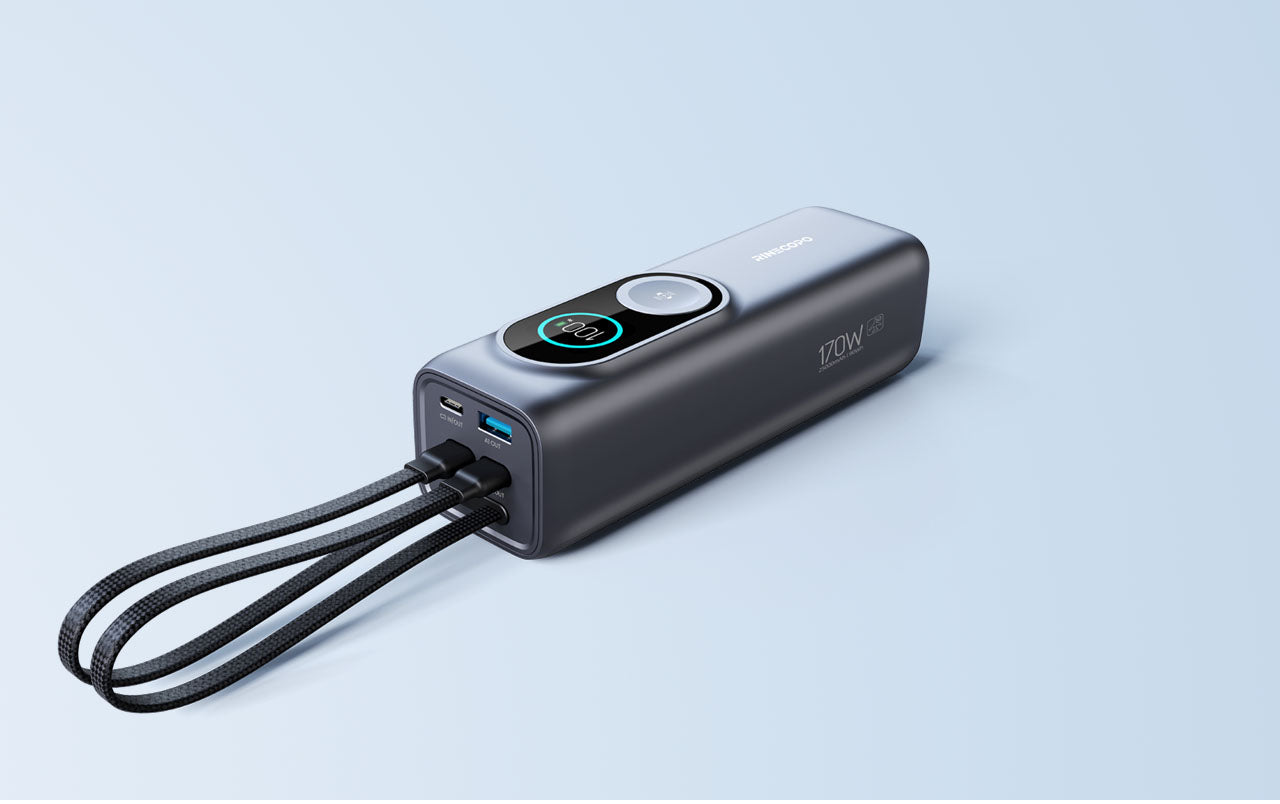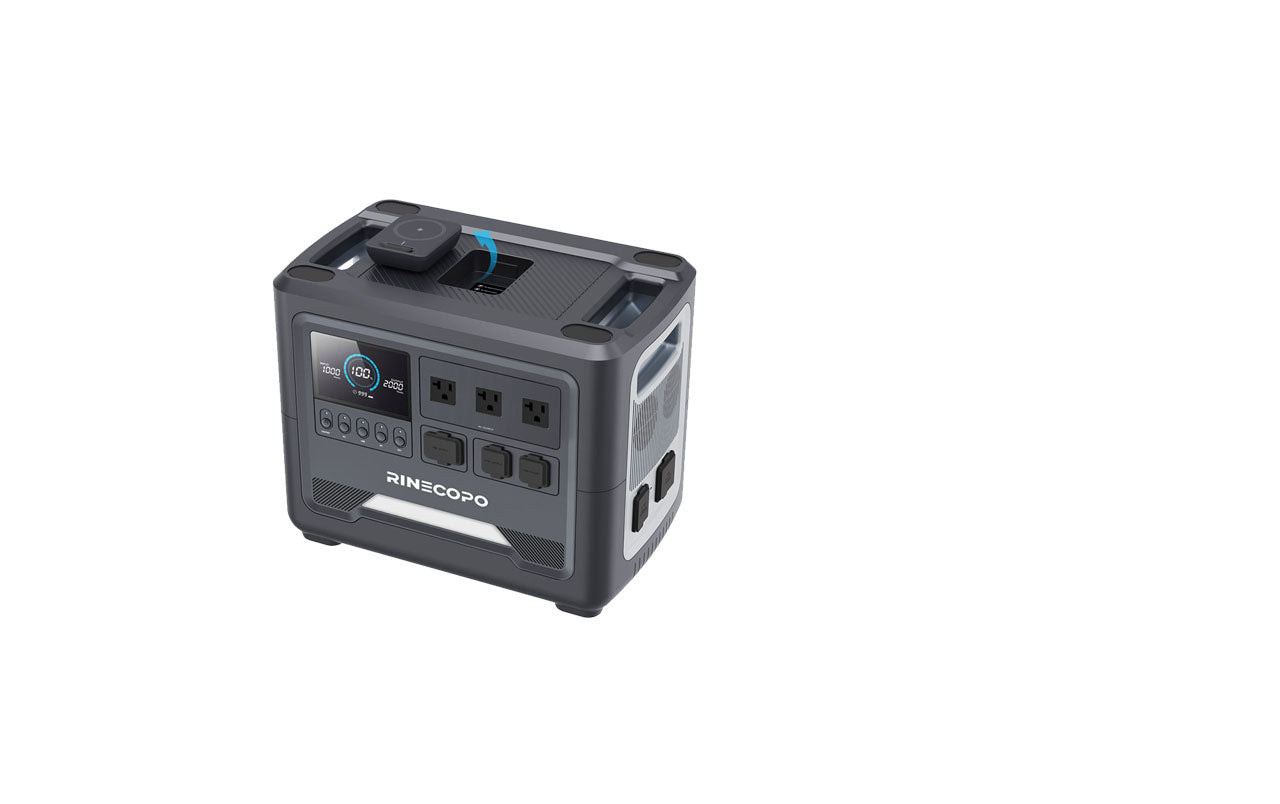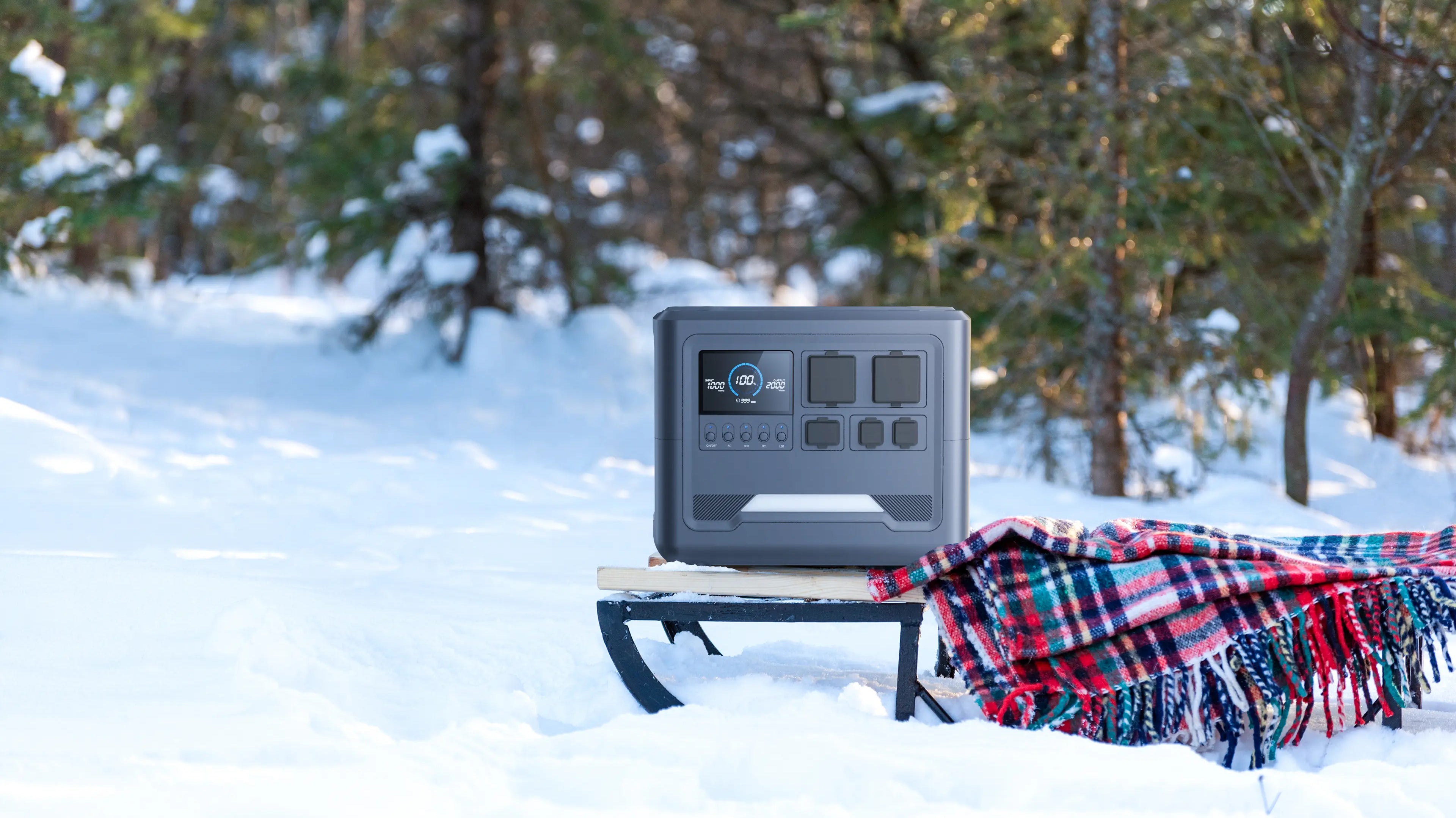
In today’s world of smartphones and digital work, reliable and uninterrupted power is crucial for both businesses and individuals. When a power outage occurs, an uninterruptible power supply (UPS) provides backup power until the main grid is restored, protecting valuable IT equipment or at least allowing you to safely shut down your systems.
But what if you don’t have the budget for a UPS, or need to work remotely on the go? In that case, a portable power station (PPS) can keep your devices running during outages or provide reliable power when you’re away from traditional sources.
Both UPS and PPS serve the same basic function—powering devices—but they operate differently and are suited for different scenarios. Keep reading to learn more about each option and how to choose the right one for your needs.
What is a UPS (Uninterruptible Power Supply)?
A UPS is a backup power system that supplies electricity to connected devices during a power outage.
Unlike emergency generators that rely on fuel, a UPS stores the required energy internally and can provide near-instant power using batteries, supercapacitors, or flywheels.
UPS battery runtime is usually short, just enough to power up backup systems or safely shut down equipment. Capacity varies depending on the devices supported—a single computer requires far less energy than a full data center or building. The higher the power demand, the larger the UPS capacity needed.
What is a Portable Power Station?
A portable power station (PPS), also known as a backup power source, stores electricity in a battery until it’s needed.
PPS units usually include AC outlets, USB ports, and DC outputs. Think of them as a mini UPS that you can carry with you. Unlike a UPS, a PPS does not automatically turn on during a power outage—you must manually connect your devices.
Portable power stations are ideal for road trips, camping, or any scenario where you need to charge devices on the go. They’re also useful when power is out, helping keep lights and essential appliances running.
In certain work environments, a PPS can be invaluable—for example, powering portable tools at a construction site before electricity is installed.
When choosing a PPS, consider battery capacity, frequency of use, and portability. Higher capacity usually means larger size and heavier weight.
RINECOPO 1800W Portable Power Station
The RINECOPO 1800W Portable Power Station is a high-capacity mobile power source suitable for high-demand devices and extended runtime. Key features include:
-
1024Wh high capacity – powers multiple devices for long periods
-
1800W AC output – supports laptops, tablets, and other high-power appliances
-
Built-in 1000W MPPT solar charger – allows fast solar charging
-
Smart display – shows battery status in real time
-
Multiple safety protections – overcurrent, overvoltage, and overheating protection for safe operation
This portable power station can provide reliable energy outdoors or serve as a backup power source for home or office use.
Key Differences Between UPS and Portable Power Stations
Function
A UPS is designed to provide immediate backup power during unexpected outages, whereas a PPS delivers mobile power when devices are plugged in.
UPS systems automatically power connected devices during an outage, while PPS units require manual activation.
A UPS is always a backup power source, while a PPS can serve as either a primary or backup power source.
Portability
PPS units are easy to move between locations. UPS systems are typically large and fixed, making them unsuitable for mobile use.
If you need immediate backup for fixed devices, a UPS is more suitable. If you need a portable power source to take on the go, a PPS is the better choice.
Runtime
UPS devices are designed for short-term power—e.g., a 350 VA UPS can supply power for roughly two hours.
PPS units can provide power for hours or even days, depending on device size, number of devices, and energy consumption.
For short emergency power, a UPS is sufficient; for long-term or off-grid use, a PPS is more appropriate.
Choosing Between UPS and Portable Power Stations
Your choice depends on your needs:
-
Short-term backup for fixed devices: choose a UPS
-
Mobile devices or extended power needs: choose a PPS, such as the RINECOPO 1800W Portable Power Station
UPS systems are ideal for sensitive home or office equipment, while PPS units are perfect for outdoor, construction, or off-grid scenarios. High-capacity PPS units can also serve as home backup power, ensuring daily operations continue during outages.
Summary
Both UPS and portable power stations provide emergency power, but they serve different purposes:
-
UPS: short-term, uninterrupted power for fixed devices
-
PPS: mobile or long-duration power for outdoor or off-grid use; can also serve as home backup
High-capacity PPS units, like the RINECOPO 1800W Portable Power Station, can handle high-power devices and multiple simultaneous loads, combining portability with reliable performance.
Recent Posts
Blog Tags
Top Solar Panel Efficiency Tips: How to Get the Most Out of Your Solar System
By optimizing your panel angles, keeping surfaces clean, improving cooling and wiring, and adding battery storage, you can maximize your solar energy output and enjoy more reliable, sustainable power every day.
Why Some USB-C Cables Don’t Work — And How to Fix It
One of the most common causes of cable failure is simple wear and tear. Constant bending, twisting, or yanking can break the internal wires, leading to unstable connections or total failure.
Signs of cable damage include:
-
Frayed or exposed wires
-
Loose or bent connectors
-
Intermittent charging or data loss
If you notice any of these symptoms, replace the cable immediately.
Cold-Weather Power Guide: How to Use Your Portable Power Station Safely in Winter
Why Cold Temperatures Affect Battery Performance
Most portable power stations use lithium-ion or LiFePO₄ batteries, both of which rely on chemical reactions to store and release energy. When temperatures drop below freezing, those chemical reactions slow down, leading to:
-
Reduced charging efficiency
-
Shortened runtime
-
Slower power output
-
Possible cell damage if charged below 32°F (0°C)
In other words, your power station’s battery isn’t “broken”—it’s just cold. Keeping it within its recommended temperature range (usually between 32°F and 104°F / 0°C–40°C) helps maintain performance and lifespan.





